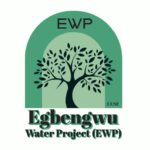Administrative Guidelines
The Foundation (CCSF) is responsible for installation and operation of the water delivery system including the following specific activities:
- I. Drilling and completion of the water source well. The operation includes using standard well drilling and completion techniques. The Foundation (CCSF) is responsible for execution of this phase of the project
- Installation of right-sized submersible pump in the water-source well. The water-source well will be equipped with a submersible pump to deliver the required volumes of water.
- Construction of a tank stand to carry the water tanks. The tank stand will be constructed with best durable materials available.
- Building of a structure to house the generator within the area provided by the community.
- Installation of a generator inside the structure (generator house) to power the submersible pump for pumping of water out of the water-source well and up to the water tanks. The generator will also provide lighting around the perimeter of the project area.
- Installation of right-sized solar panels as secondary (backup) power source to the generator. The plan is to use the solar panels as the power source for the submersible pump and perimeter lights on sunny days. The generator will be the source of power on rainy or cloudy days.
- Acquisition of two, 1000+ gallons water tanks for water storage and distribution. The water tanks will be mounted on the tank stand.
- A water dispensation structure with three or more faucets for distribution of water to the public.,
- A concrete-cement slab as the structure that will cover and define the project area. The project area will be fenced either with cement blocks or other security barriers. Actual method of fencing will be determined later based on location of the project area.
- Electrical design and wiring with proper control panels for centralized switching of the submersible pump, the solar panel and the lights.
- Centralized plumbing plan to control water flow from the water-source well to the water tanks, between the tanks, and from the tanks to the water delivery structure. Each water tank will be equipped with its own valves to control water flow.
- An integrated project plan designed by an architect, structural engineer, water source engineer, electrical engineer, plumber, etc. The integrated project will be customized to meet the needs, conditions and environment of each village and Egbengwu.
- The project land area donated by the community may not have adequate aquifers located underground either in terms of water quality and/or quantity to sustain water supply over estimated project life of at least ten years. The quality and quantity of water in the underlying aquifer will be determined professionally by a geologist or a hydrologist. If such conditions do not exist in a proposed area, the community will be required to donate another project area before the Foundation can proceed with the water project.
- The Foundation (CCSF) is not required by any expressed or implied obligations to install the water project in any community. The decision to proceed with the installation of a water project in any community in Egbengwu remains the exclusive decision of CCSF after careful evaluation of the donated project land area and the commitment of the community to the water project. Decisions made by CCSF and her agents with regards to the water project are not subject to any arbitration and/or litigation. Each community will be required to commit to this condition before they will be invited to participate in this project.
EGBENGWU WATER PROJECT

REACH US
Phone: +1-713-900-9137
Email: info@chim-ewp.org
